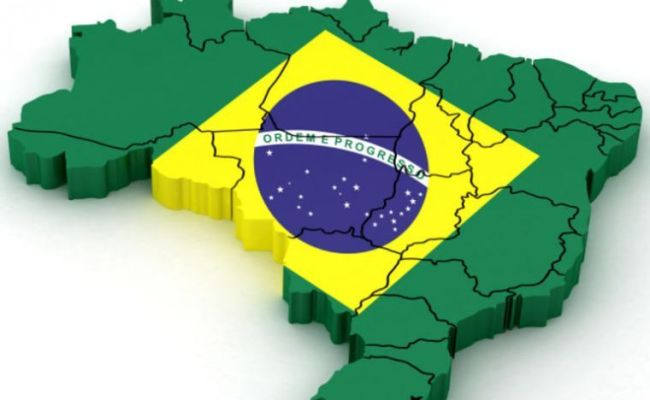RIO DE JANEIRO, BRAZIL – After the pandemic, countries around the world will have to address the debt they have incurred to fight the economic and social impacts of Covid-19. For those who were prepared for the crisis, there will be little hardship. But among emerging countries, few will face a challenge the magnitude of the Brazilian situation.
The general government’s gross debt, which closed last year at 75.8 percent of the Gross Domestic Product (GDP), exceeded 80 percent for the first time in May. This week, Economy Minister Paulo Guedes conceded that the debt may exceed the 100 percent-of-GDP mark by the end of the year.

The concern is shared by Treasury Secretary Mansueto Almeida, who stressed the worsening fiscal situation with the R$600 emergency aid, extended until September. The amount that the government planned to spend on three months of aid (R$154 billion) was already greater than last year’s entire R$95 billion deficit.
The Ministry of Economy’s official projection is that Brazil’s gross debt will reach 98 percent of GDP in December, in line with market expectations, but without exceeding GDP by 2029.
The Independent Fiscal Institution (IFI), the Senate’s monitoring body, is expecting the debt to exceed 100 percent of GDP in 2022 or as early as 2020, in the worst case scenario. Regardless of what happens, the fiscal challenge has reached a new level.
Gross debt is relevant because it is one of the main references used by global credit rating agencies to evaluate the country’s chances of defaulting on its international loans.
The 100 percent GDP mark, though symbolic, is not inherently negative. It is the level that the National Monetary Fund (IMF) expects for developed countries this year, and it seems small in relation to Japan, for instance, where gross debt exceeds 200 percent of GDP.
But these countries have more favorable conditions than Brazil, both for growth and financing. And more than the level itself, what matters is the trajectory of the debt over time.
A worrying trajectory
At the best moment in the series, in December 2013, Brazil’s gross debt represented 51.5 percent of GDP. Since then, it has increased by more than 30 percentage points in the course of seven years.
The dynamics began to deteriorate further during the 2015 and 2016 crisis, when the highest interest rate in the country’s history, the inertial growth of federal public spending, and a deep recession were combined, followed by a poor rebound.
Before the crisis, Brazil already had one of the worst debt projections among its emerging and Latin American peers, for which the International Monetary Fund (IMF) estimates an average debt of 81 percent of GDP in 2020.
Primary deficits and low GDP feed the debt
More recently, the negative balance between government revenue and expenditure, coupled with the diminishing GDP, has been feeding the debt. In order to stabilize the debt, a positive balance will be required, which has not been the case for six years and may lead to a further 13 years, according to the IFI calculations.
“The primary surplus will not return anytime soon, not before 2030, particularly because the crisis occurred in a context of very low growth,” says Felipe Salto, the IFI’s executive director. The primary deficit in 12 months has already increased from 1.24 percent of GDP in December 2019 to 3.91 percent in May and should exceed 15 percent of GDP this year, as Guedes conceded.
The Minister points out that the federal revenue collection is already improving, although this is an insufficient hope for experts, who call for a sign that there are specific control plans.
“To achieve a consistent policy, Guedes’ campaign pledge to generate a surplus in one year will not work. You can’t reduce a 13 percent deficit of GDP (R$912.4 billion), which is what we expect to see this year, to zero. The ideal is to have a perspective,” Salto says.
Alberto Ramos, Goldman Sachs’ chief economist for Latin America, points out in a report that the debt and deficit growth leave the economy vulnerable to domestic and external shock.
“Addressing the unsustainable dynamics of public debt and creating fiscal buffers unquestionably remains the main macro challenge facing both the executive and the legislature when the pandemic is brought under control,” Ramos says.
Monetary policy
In addition to GDP and the primary result, the interest rate also influences the gross debt dynamics, since it influences the trajectory of the price to be paid to investors. Currently, basic interest at its historical low lessens the burden of this bond. But this will not be the case forever.
“Low interest, at 2.25 percent a year, is helping. If it were the 14 percent in 2016, we would now be running up unsustainable debt. But it is a risky picture, since the Secretary of the Treasury himself said that the consequence is for the debt to have its average term shortened”, says Salto.
This means that with more risks on the horizon, investors will want higher yields if the debt term is long. In addition, economists believe that the SELIC [basic Treasury rate] at its current level is unsustainable, and should rise in the medium term.
“The delicate rebound expected next year could be hampered by the need to contain the increase in risk perception and the bullish dollar. The response would end up leading to an increase in interest rates, undermining the dynamics of public debt,” estimates the IFI.
According to Bruno Funchal, who will replace Mansueto as head of the Treasury, the fiscal issue will be his management’s greatest challenge, but there is a two-year period of low interest rates to be exploited. “This is our window of opportunity,” said Funchal on Friday, July 3rd, over a live broadcast organized by Itaú BBA Bank, which Mansueto also attended.

